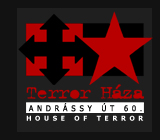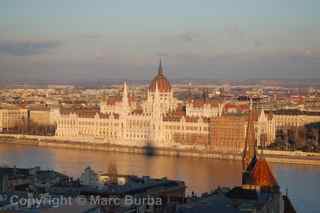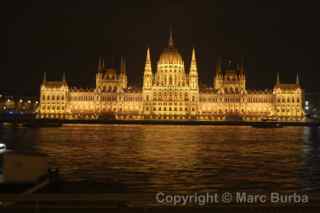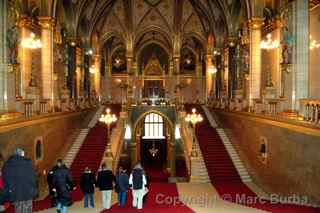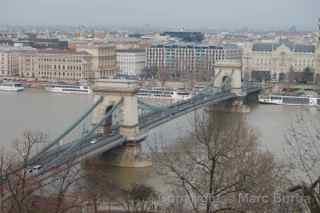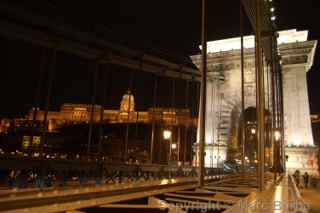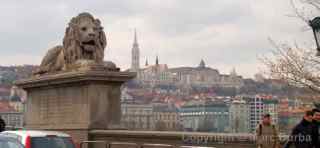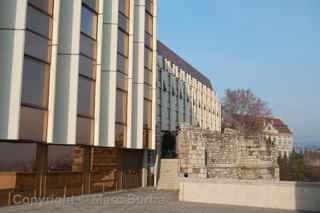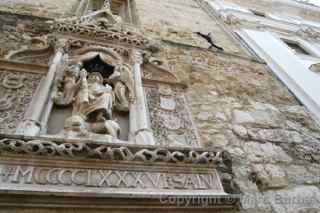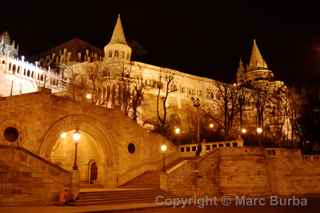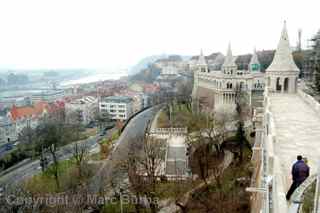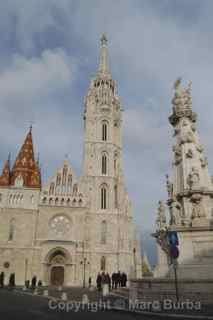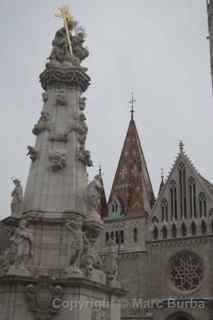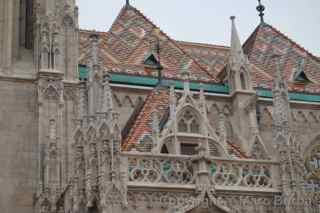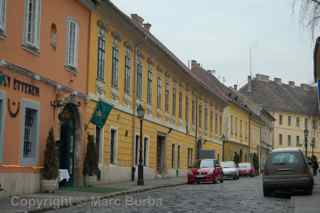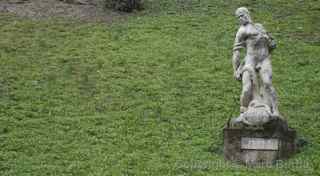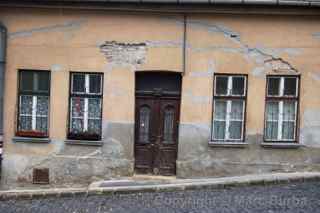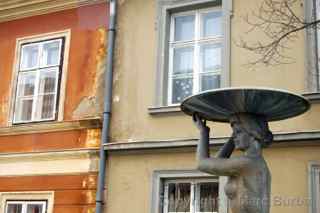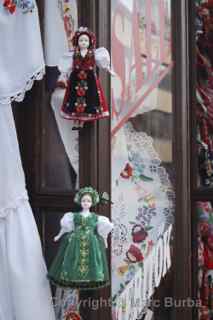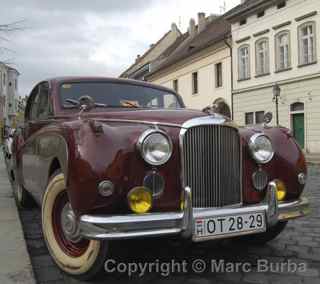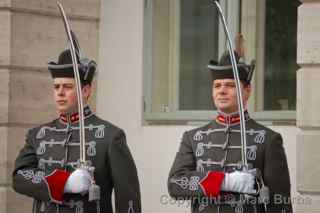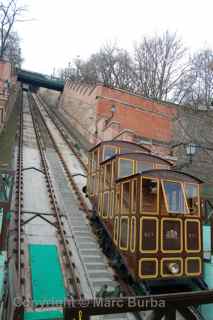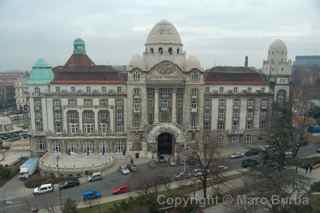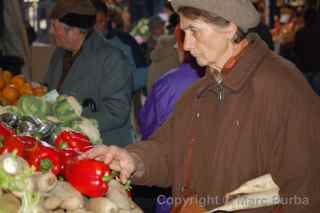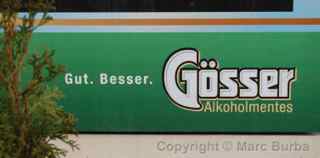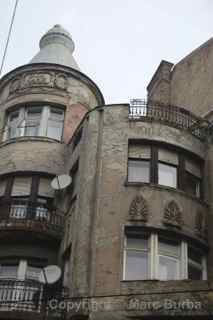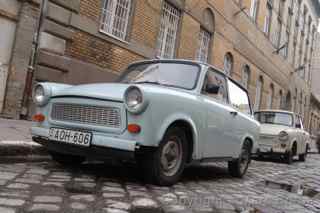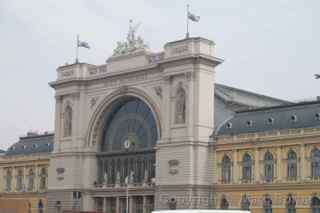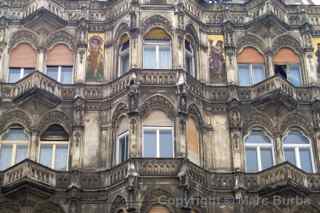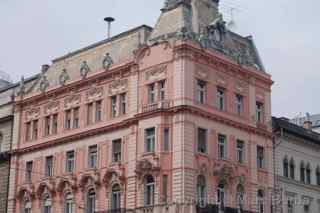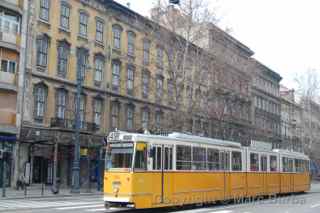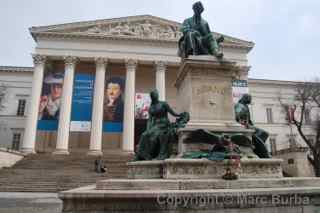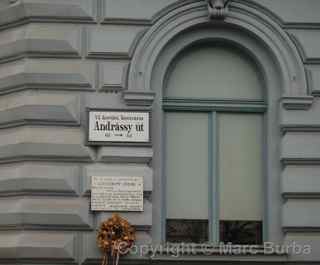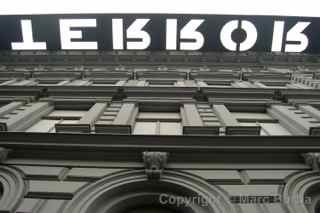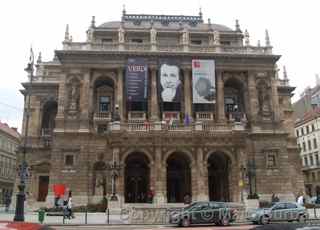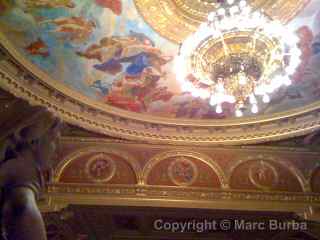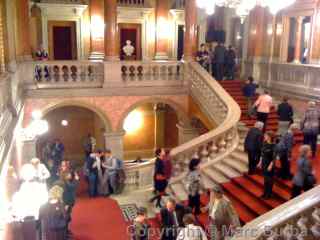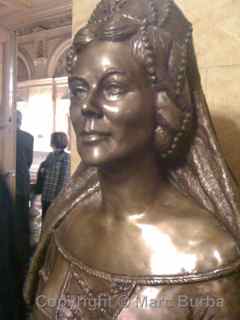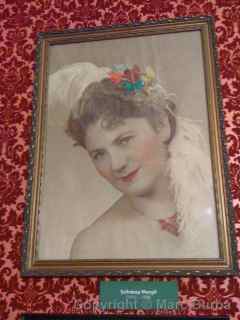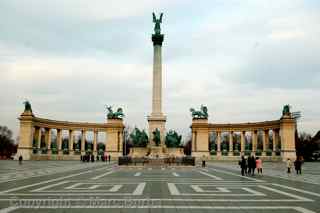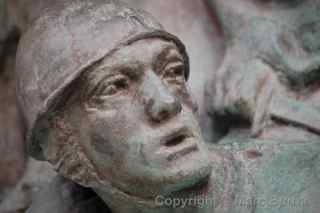Budapest, Hungary
It’s nice to return to a favorite city. I’m not overwhelmed, the language barrier isn’t as intimidating, and I know where I want to go and how to get there. I still explore and walk and get lost, but I don’t feel pressured to see everything — I can just absorb and enjoy. That’s what I did when I came back to Budapest after falling in love with it several years earlier. Here’s my Top 10 list for absorbing and enjoying:
Rudas Thermal Bath
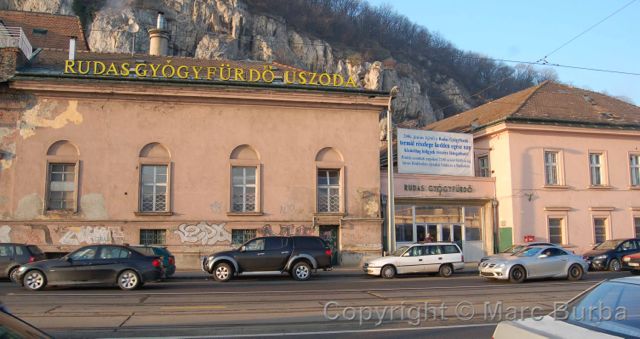 I am floating on my back in an octagonal pool of steaming, slightly radioactive, 97-degree water. I sink my ears below the surface, and the dozens of conversations echoing off the centuries-old bricks are muffled. Directly above me, 78 tiny skylights in a 33-foot-diameter dome filter light through red, yellow, blue, green, violet, and white colored-glass panels. The place smells vaguely of sulphur, a product of the mineral-rich water fed by a hot spring.
I am floating on my back in an octagonal pool of steaming, slightly radioactive, 97-degree water. I sink my ears below the surface, and the dozens of conversations echoing off the centuries-old bricks are muffled. Directly above me, 78 tiny skylights in a 33-foot-diameter dome filter light through red, yellow, blue, green, violet, and white colored-glass panels. The place smells vaguely of sulphur, a product of the mineral-rich water fed by a hot spring.
I am wearing only a modesty cloth — a white square of cotton at my waist and tied in the back. I really left modesty at the door — it turns almost sheer when it’s wet. The shoelace-thin tie reminds me of floss because of where it rests. This is the customary dress here.
Most of the Hungarians are nothing to look at — older, grizzled, and pot-bellied. But this is a traditional gathering spot for the men of Budapest. For centuries, this is where they have come to talk, to debate, and to rejuvenate, in the style of a Turkish bath. Rudas was built in the 1560s.
Eight stone columns surround the pool and support the central dome. Smaller pools are in each corner: 82 degrees, 86 degrees, 91 degrees, and 108 degrees. Off to one side, a small fountain is between the entrances to the scalding-hot steam and sauna rooms. Many men cup their hands to the ever-flowing stream and sip, so I do too. It’s hot, and smells of rotten eggs. The taste isn’t any better, but it’s supposed to help with digestion.
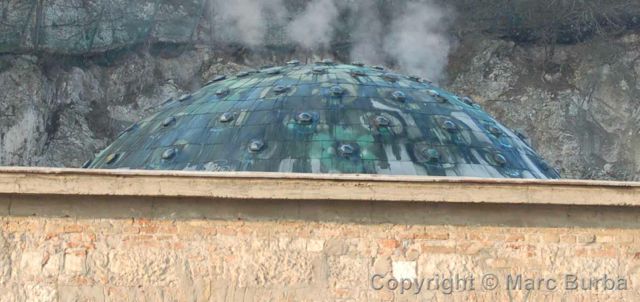 The building doesn’t look like much from the outside— bland features, graffiti-scarred with peeling paint and an institutional entrance. It was built around the old section. Even the tarnished cupola blends in with the sheer rock face behind it.
The building doesn’t look like much from the outside— bland features, graffiti-scarred with peeling paint and an institutional entrance. It was built around the old section. Even the tarnished cupola blends in with the sheer rock face behind it.
After a couple of hours in the pools, and an appropriate cool-down time on a lounge chair in a quiet room, I am refreshed again and ready to hit the town. I think my skin is glowing too. Maybe it’s the radiation.
Hungarian State Opera
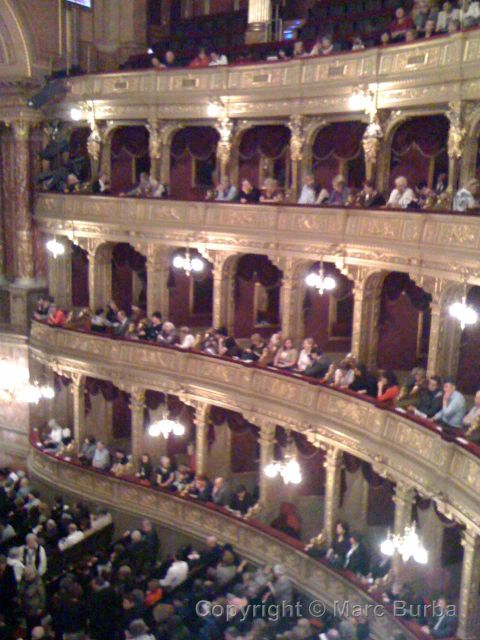 I bought the historical novel “The Invisible Bridge” and began reading it as I traveled here. In the opening pages, the main character and his brother attend Puccini’s “Tosca” at the Hungarian State Opera House in 1937. And that’s what I did on this day. The performance was just a coincidence, but I was able to experience it like Andras Lévi did:
I bought the historical novel “The Invisible Bridge” and began reading it as I traveled here. In the opening pages, the main character and his brother attend Puccini’s “Tosca” at the Hungarian State Opera House in 1937. And that’s what I did on this day. The performance was just a coincidence, but I was able to experience it like Andras Lévi did:
“Andras had never expected to see an opera here, nor would he have if Tibor hadn’t bought the tickets. But it was Tibor’s opinion that residence in Budapest must include at least one evening of Puccini at the Operahaz.
“After a moment of quivering stillness, a storm of music rolled out of the brass and strings and entered Andras’s chest, filling his ribcage until he could barely breathe. …
“The sound was so solid, so tangible, it seemed to Andras he could reach over the edge of the balcony and grab handfuls of it. The building itself had become an instrument, he thought: The architecture expanded the sound and completed it, amplified and contained it.”
From my box seat, I could marvel at the ceiling fresco, the marble statues, the heavy red curtain, the gilded details. The woman sitting next to me seemed just as enchanted. The opera was in Italian; a light board above the stage provided a Hungarian translation. I was lost, but still absorbed, just like the book character.
Castle Hill Funicular
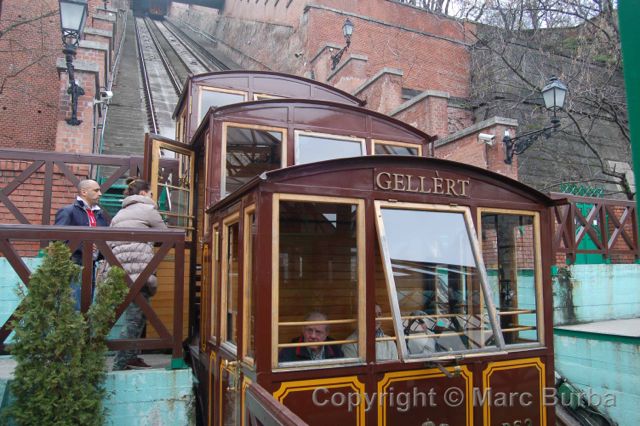 The ride up Castle Hill takes less than two minutes, and costs about $4.50 for a one-way ticket. It’s almost as easy to walk, of course, but there’s something special about riding a funicular. It’s such an old-timey transportation mode.
The ride up Castle Hill takes less than two minutes, and costs about $4.50 for a one-way ticket. It’s almost as easy to walk, of course, but there’s something special about riding a funicular. It’s such an old-timey transportation mode.
On the way up, I have a great view of the Chain Bridge and the Danube, which are just beyond the base station. But before I know it, the ride is over. I exit not too far from Buda Castle, which dwarfs everything else on the hillside. From here, I can explore anywhere in the compact Castle District, much of which has been rebuilt after World War II bombings.
This funicular started operating in 1870, but it, too, was destroyed during World War II. It was rebuilt and started running again in the 1980s.
House of Terror
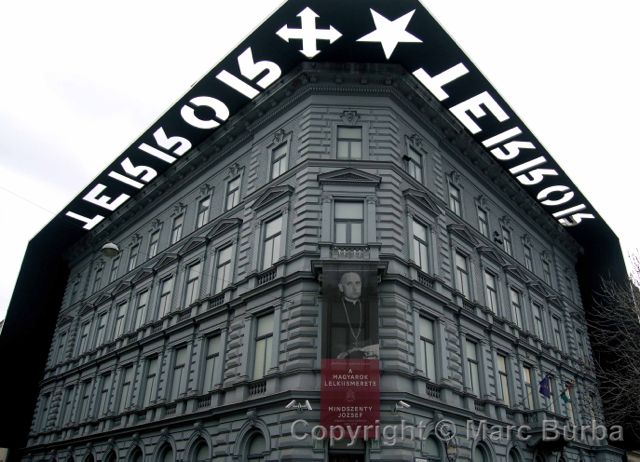 The building at 60 Andrássy út is painted a solid, depressing gray, like it’s eternally cloaked in fog. At eye level along its outer walls are small, black-and-white oval portraits of men and women of all ages with one thing in common: the years in which they died. This building was the headquarters of the Hungarian Nazis’ Arrow Cross Party, which ruled the nation toward the end of World War II, and then served as the home of the equally oppressive State Security Office and State Security Authority under Communist rule. Hundreds of people — Jews, students, opposition leaders — were held prisoner in small rooms in the building’s cellar, where they were interrogated, tortured, and often killed. The groups also led roundups, deportations, and exterminations of thousand of others during their reigns. This museum documents the regimes’ rise to power and the vise grip they had over Hungary, and honors their victims. A dramatic black sculpture surrounds the building as a permanent shadow, branding it as a place of terror.
The building at 60 Andrássy út is painted a solid, depressing gray, like it’s eternally cloaked in fog. At eye level along its outer walls are small, black-and-white oval portraits of men and women of all ages with one thing in common: the years in which they died. This building was the headquarters of the Hungarian Nazis’ Arrow Cross Party, which ruled the nation toward the end of World War II, and then served as the home of the equally oppressive State Security Office and State Security Authority under Communist rule. Hundreds of people — Jews, students, opposition leaders — were held prisoner in small rooms in the building’s cellar, where they were interrogated, tortured, and often killed. The groups also led roundups, deportations, and exterminations of thousand of others during their reigns. This museum documents the regimes’ rise to power and the vise grip they had over Hungary, and honors their victims. A dramatic black sculpture surrounds the building as a permanent shadow, branding it as a place of terror.
The Chain Bridge at night
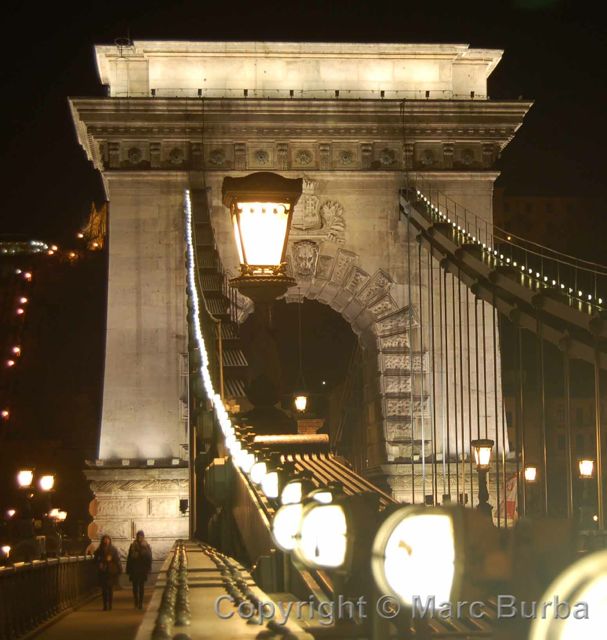 The woman walked alone across the Chain Bridge, high heels clicking on the concrete. I could see her brown dress and a matching jacket with embroidery on the collar, her brown wool cloche hat with a flower, and bright red lipstick. She was probably in her early 40s. She walked slowly, looking out at the black Danube but deep in thought, like she was waiting for a lost love. It could easily have been a movie scene, or time travel back to the 1940s, when war and loss gripped the city. Maybe she was a ghost.
The woman walked alone across the Chain Bridge, high heels clicking on the concrete. I could see her brown dress and a matching jacket with embroidery on the collar, her brown wool cloche hat with a flower, and bright red lipstick. She was probably in her early 40s. She walked slowly, looking out at the black Danube but deep in thought, like she was waiting for a lost love. It could easily have been a movie scene, or time travel back to the 1940s, when war and loss gripped the city. Maybe she was a ghost.
It’s my most vivid memory of this icon. The tourist crowds here thin out at night too. The people walking its span want to be here; they’re not being coaxed along by a tour guide. Views are breathtaking: on one side, the illuminated Buda Castle; on the other, Parliament. From a paved path near the river on the Pest side, the bridge itself is the center of attention. It positively glows in goldish-tans. I take time to think about its destruction during World War II, when all the bridges of Budapest were bombed during a siege that lasted for weeks. Only its pillars remained standing. It was rebuilt a few years later, to what it is today: one of the most beautiful symbols of the city.
Parliament
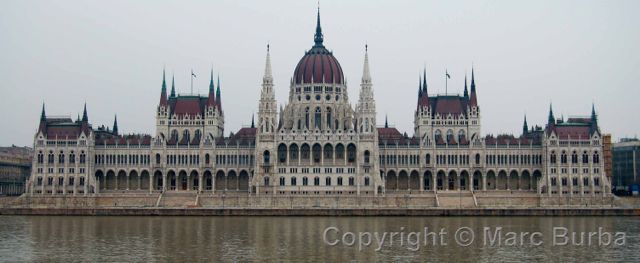 The stunning late-19th-century building sits on the banks of the Danube and is beautiful when viewed from the Fisherman’s Bastion or the Chain Bridge. I found the best view, though, right along the river on the Buda side, near the Batthyány tér metro station. It is dramatic in the daytime, but it is gorgeous at night when the entire 780-foot length is lit up. The interior — almost 200,000 square feet — is stunning too. Three English-language tours are offered daily. Outside is a memorial to the people killed during the Hungarian Revolution of 1956, on the spot where one of the largest demonstrations began.
The stunning late-19th-century building sits on the banks of the Danube and is beautiful when viewed from the Fisherman’s Bastion or the Chain Bridge. I found the best view, though, right along the river on the Buda side, near the Batthyány tér metro station. It is dramatic in the daytime, but it is gorgeous at night when the entire 780-foot length is lit up. The interior — almost 200,000 square feet — is stunning too. Three English-language tours are offered daily. Outside is a memorial to the people killed during the Hungarian Revolution of 1956, on the spot where one of the largest demonstrations began.
The Blue Line metro
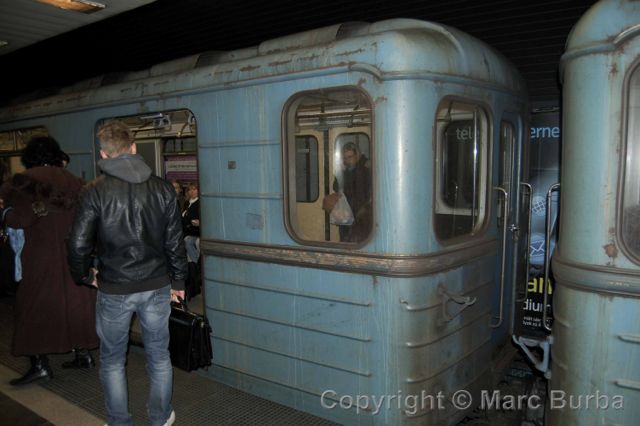 The faded, water-stained train cars creak and groan as they approach the underground platform. The brakes shoot needles of high-pitched squealing into my ears, and I wonder whether it will stop where it’s supposed to. Somehow it does, and dozens of passengers emerge through rust-bubbled doorways. It’s not a trip from stop to stop
— it’s a trip back in time. When I see elderly people riding, I wonder about all they have witnessed in their lifetimes in this tragic city.
The faded, water-stained train cars creak and groan as they approach the underground platform. The brakes shoot needles of high-pitched squealing into my ears, and I wonder whether it will stop where it’s supposed to. Somehow it does, and dozens of passengers emerge through rust-bubbled doorways. It’s not a trip from stop to stop
— it’s a trip back in time. When I see elderly people riding, I wonder about all they have witnessed in their lifetimes in this tragic city.
The metro system is the oldest electrified underground in continental Europe. Its yellow line was built in the 1890s, though the carriages on it and the red line are more modern. This line is the throwback of the three, and has the most character. It was built in the 1970s and uses Russian-made cars from that era, but it looks and feels even older. Forget a smooth ride — I feel every bump and turn, and hear every protest from the strain on the aging metal. But that is the charm. And with my Budapest Card (a treasure of tourism discounts), I have unlimited access to all public transportation in the city.
Hilton Budapest
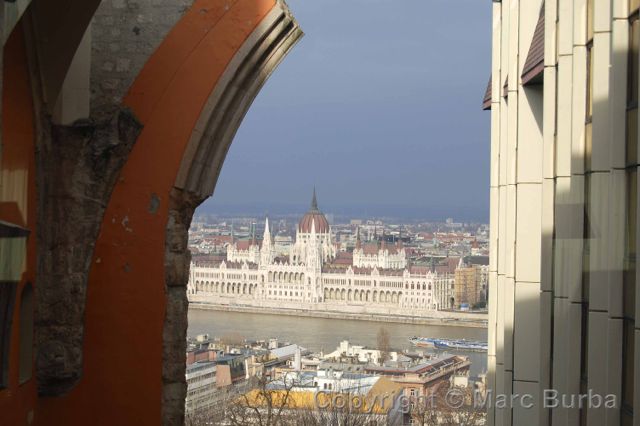 One of the perks of frequent Hilton stays is access to executive floors and executive lounges, and nowhere is the service finer than here. From this lounge, I have a view of the Parliament building, perfectly framed by the ruins of a medieval monastery incorporated into the hotel’s design. My room has a similar view. The attentive staff prepares full breakfasts; afternoon coffee, tea, and sweets; and evening drinks (alcoholic and non-) and snacks that are more like a full dinner. I am treated like a king whenever I’m here. It makes it tough to be a tourist — I don’t want to leave the building. But when I do, the historic Fishermen’s Bastion and St. Matthias Church are literally a few steps away, and the entire Castle District is within walking distance. The district is really quiet and pleasant in the early morning and at night, so I can avoid the tourist hordes that flow in by bus in the late mornings and most of the afternoon.
One of the perks of frequent Hilton stays is access to executive floors and executive lounges, and nowhere is the service finer than here. From this lounge, I have a view of the Parliament building, perfectly framed by the ruins of a medieval monastery incorporated into the hotel’s design. My room has a similar view. The attentive staff prepares full breakfasts; afternoon coffee, tea, and sweets; and evening drinks (alcoholic and non-) and snacks that are more like a full dinner. I am treated like a king whenever I’m here. It makes it tough to be a tourist — I don’t want to leave the building. But when I do, the historic Fishermen’s Bastion and St. Matthias Church are literally a few steps away, and the entire Castle District is within walking distance. The district is really quiet and pleasant in the early morning and at night, so I can avoid the tourist hordes that flow in by bus in the late mornings and most of the afternoon.
Great Market Hall
 Elderly women examine fresh produce set out in front of dozens of stalls. Others select fresh meat, or spices, or flowers. There will be a lot of fantastic meals in homes throughout the city in a few hours.
Elderly women examine fresh produce set out in front of dozens of stalls. Others select fresh meat, or spices, or flowers. There will be a lot of fantastic meals in homes throughout the city in a few hours.
This three-story hall was built in the late 1800s and was renovated a century later. The main level is home to produce and spice vendors, while the second floor is filled souvenir stalls and food stands. In the basement is a supermarket, more produce vendors, and a deli.
I browse for a while, but I don’t have to cook anything, and I don’t need any souvenirs. I’m satisfied to walk out with the experience. That’s free.
Kerepesi Cemetery
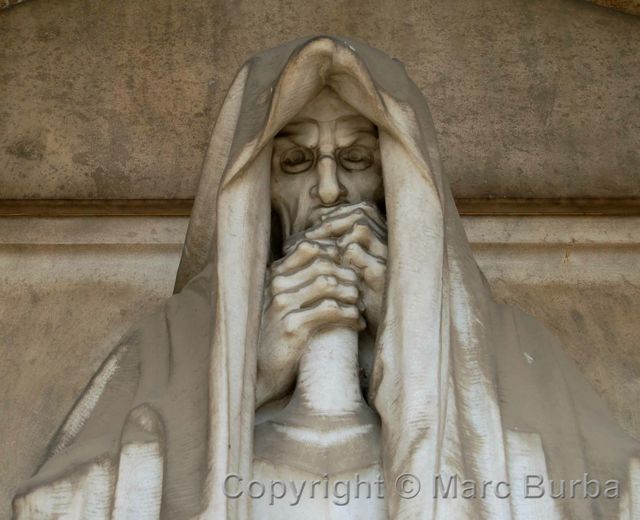 I cannot decide which path to take first in this huge sculpture park. It’s the place I most wanted to return to on this second visit, because I did not have enough time to explore during my last brief stop.
I cannot decide which path to take first in this huge sculpture park. It’s the place I most wanted to return to on this second visit, because I did not have enough time to explore during my last brief stop.
The Fiume Road National Graveyard is so much more than a graveyard. It’s an open-air museum. It’s a World War II battleground. It’s a chronicle of the city’s dark history — from a huge Communist monument to simpler memorials for young men killed during the 1956 uprising.
Politicians of every persuasion, academics, scientists, artists, and commoners are together for eternity in this gorgeous cemetery about a mile from the Danube of the Pest side of the city. It’s not a place of sadness today. People come to walk and enjoy nature or just spend some quiet time. The historic cemetery started burials in the 1800s. Find out more about it here.

